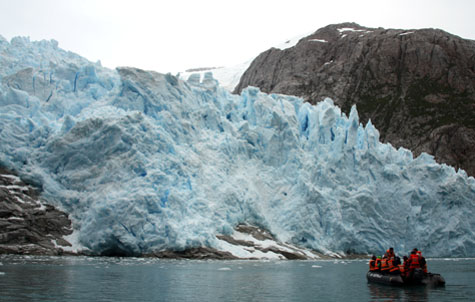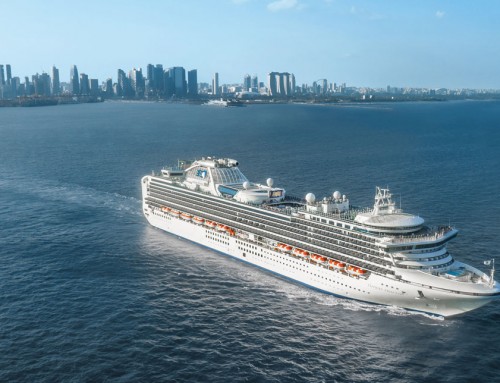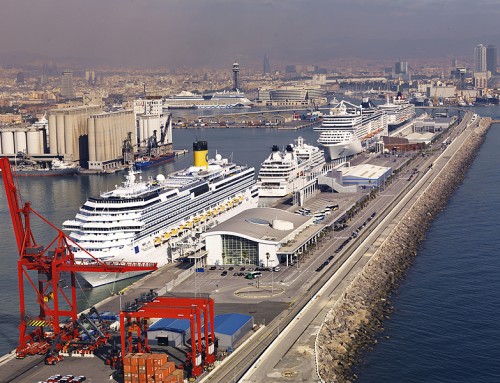 If passengers on board the expedition ship Via Australis were wondering why the ice in their drinks came in large irregular lumps, rather than uniform cubes, then they discovered the reason on an excursion to the Piloto glacier (above).
If passengers on board the expedition ship Via Australis were wondering why the ice in their drinks came in large irregular lumps, rather than uniform cubes, then they discovered the reason on an excursion to the Piloto glacier (above).
As the Zodiac inflatables picked their way carefully though the substantial chunks of ice floating in the fjord at Chico Sound, members of crew were picking manageable-sized mini icebergs from the water and taking them on board.
So there were two good things about my gin and tonic that night – and each night. Firstly, like every drink at the bar including the formidable Pisco Sour cocktails which became another favourite, it was complimentary, and included in the fare. Secondly, the ice was created from snow which fell on the Darwin Range of the southernmost Andes in Tierra del Fuego a thousand years ago, and was cleaner and purer than any water that came out of a tap.
There was no shortage of it. The glacier cracked, creaked, popped and boomed like a bag of microwave popcorn in a thunderstorm, and every few minutes a mini avalanche if ice pebbles fell to the sea.We waited in vain, however, for one of the bigger sections – some the size of a house – to be dislodged into the water.
At the end of the valley another glacier snaked down the mountainside towards the sea. In complete contrast to the jagged, shattered, electric-blue ice of the Piloto, the Nena looked more like a frozen motorway, its surface black with moraines of rock debris and its ice melting and receding rather than advancing ever onwards.
Our brief excursion from the ship ran like clockwork to give everyone a chance to get close to the glaciers in the limited time available, and was organised into different groups so that the Spanish, French, Portuguese, German and English-speaking passengers each got commentary in their own language from the knowledgable expedition staff.
Once we’d had our fill of the glaciers, we were also given an encounter with some of the local wildlife, including the delightfully-named imperial shags – a black and white cormorant – nesting on cliff ledges, and the fearlessly inquisitive dark-bellied cinclodes – a distant cousin of the house sparrow – which perched on the bow of our Zodiac.
Back on the Via Australis, there was one more glacier treat in store. Before leaving the narrow fjord, we sailed past the Gunter Pluschow Glacier, just as spectacular as The Piloto, and named after a German explorer who was held as a prisoner of war in England during the First World War, and who escaped from Donington Hall in Leicestershire.






Leave A Comment